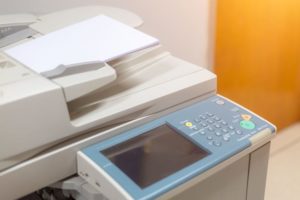
fax/copier over VoIP is not as straightforward as you might think
Voice-over-IP (VoIP) is a cost-effective and reliable replacement of the public switched telephone network (PSTN). However, companies that switch to VoIP systems often complain that their fax machines or fax software do not work reliably.
This is a problem because many businesses still depend on fax communication to continue with their usual workflow. As a result, it remains a potential obstacle to replacing all of their landlines with VoIP. Let us look at some of the reasons why fax transmissions over VoIP don’t work effectively.
Why Doesn’t Fax over IP Work?
The reason why fax doesn’t work properly in VoIP is that VoIP IADs are not meant to handle faxes. The codecs used in these devices are meant to compress voice. However, not all of them convert analog signals sent and received by modems effectively.
Furthermore, a VoIP device first converts the voice of the speaker into transferrable digital packets and then sends it over the internet connection. Because of the nature of internet connections, not all of the packages arrive at their destinations at the same time.
It’s also possible that some of these packets never arrive at the destination. Therefore, these packets are discarded, yet the receiving VoIP device still has enough packets to ensure that you have a clear and understandable conversation.
Fax over an IP connection fails because of the way fax protocols work. These protocols rely on a precise timing mechanism, which means fax transmissions are far more sensitive to the latency and delays. However, as we have discussed before, these latency issues and delays are an inherent part of a packet-based network, such as an internet connection.
Faxes were designed to work on PSTN networks that don’t have any jitter or unevenness in their speed of transmission. This is why faxing transmissions don’t work in VoIP because there is no Quality of Service Control on the Internet.
To understand the fax transmission protocol (T.30 protocol), let us discuss five separate phases of a fax transmission. These phases work in a consecutively-timed sequence and work in the following manner:
1. Call Establishment
In the first phase of this process, the calling terminal dials the number you assign it and answers the call. These devices also exchange fax tones during this phase.
2. Pre-Message Procedure
After exchanging fax information, the calling and receiving terminals exchange further information related to capabilities and identification. This information includes phone numbers and organization names.
3. In-Message Procedure and Message Transmission
The in-message procedure in fax transmission sends control signals for detecting errors and correcting them and synchronizing the received information. The message transmission also includes the modulation, demodulation, and coding scheme. Sometimes, this phase is further broken into two subparts. Regardless, both of these activities happen at the same time.
4. Post-Message procedure
In this phase, the calling terminal sends multi-page and end-of-message, along with end-of-facsimile signaling. At the same time, the terminal that was called sends confirmation messages that confirm the receipt of the calling terminal’s messages.
5. Call Release
In the end, the terminal that initiated the call sends a disconnection signal to end the call.
As you can see, the fax transmission is a sequential process, and any interruption during the transmission can create an error. Whenever these errors occur, your devices will stop sending faxes.
How Can VoIP Connections Overcome This Problem?
Does this mean that you can only use PSTN for faxing transmissions? Not necessarily, VoIP providers can also cater to faxing transmissions by providing optimized fax communications. These service providers may go to special lengths to enable fax transmissions in VoIP. For instance, some providers dedicate an entire line for fax as a part of their business plans.
Alternatively, some providers use protocols, other than T.30, to support faxing over VoIP connections. One of the most used protocols in this respect is the T.38 protocol and G.711 codecs. If you want to send faxes over a VoIP line, consider a VoIP service provider that supports either of these protocols.
It’s true that faxing over a VoIP line presents some challenges. However, most companies have advanced protocols and technologies to address the issues, which once made faxing impossible in VoIP. Since faxing is no longer a problem in VoIP, you should consider replacing your landlines with a cost-effective VoIP solution.
DLS Internet Services has been offering comprehensive VoIP solutions since its inception in 1995. We strive to implement best practices in VoIP and deliver innovative business-to-business hosted PBX solutions. Our VoIP solutions employ SIP protocol and other VoIP technologies to ensure that customers have a seamless communication experience. The use of e-faxing, fax-aware analog telephone adapters (ATAs) along with the T.38 protocol with conventional fax machines ensures a high level of deliverability of fax pages over IP networks.